Key takeaways:
- Cravings often stem from emotional triggers and environmental cues; recognizing these can facilitate mindful eating choices.
- Maintaining balanced nutrition, including proteins and whole foods, helps reduce the intensity of cravings.
- Practical strategies like hydration, healthy snacks, and mindful eating can provide immediate relief and long-term craving control.
- Embracing cravings rather than resisting them and understanding their emotional connections can foster healthier eating habits.
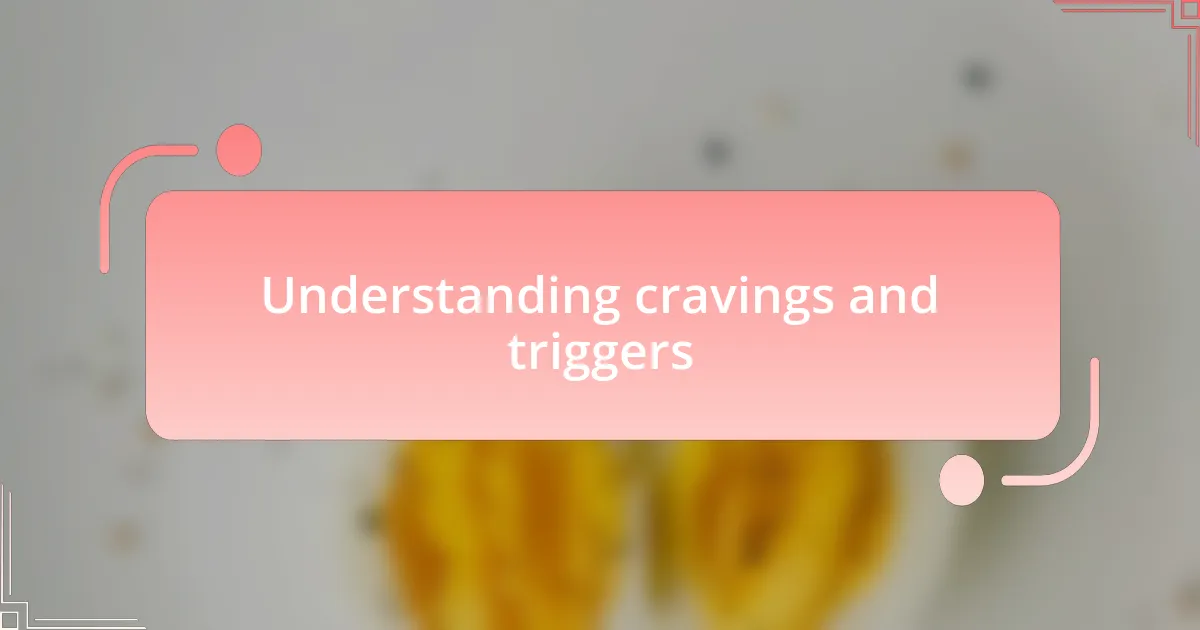
Understanding cravings and triggers
Cravings can often feel overwhelming, but understanding their roots is key. For example, I’ve noticed that stress tends to trigger a strong desire for comfort foods. It’s almost as if my brain associates those dishes with a sense of security and nostalgia, reminding me of family gatherings and happy times.
Many factors can contribute to cravings, from emotional states to environmental cues. I remember a period when I would reach for snacks every afternoon while working. The moment my mind wandered back to the long hours at my desk, my body would signal a craving for something crunchy. It’s fascinating how just sitting in that space can activate those feelings.
Recognizing these triggers provides a powerful opportunity for change. I often ask myself, “Am I really hungry, or is something else at play?” This reflection helps me differentiate between physical hunger and emotional urges, allowing me to make more mindful choices. Isn’t it intriguing how our bodies and minds work together in this dance of cravings? By tuning into these patterns, we can navigate our eating habits more effectively.
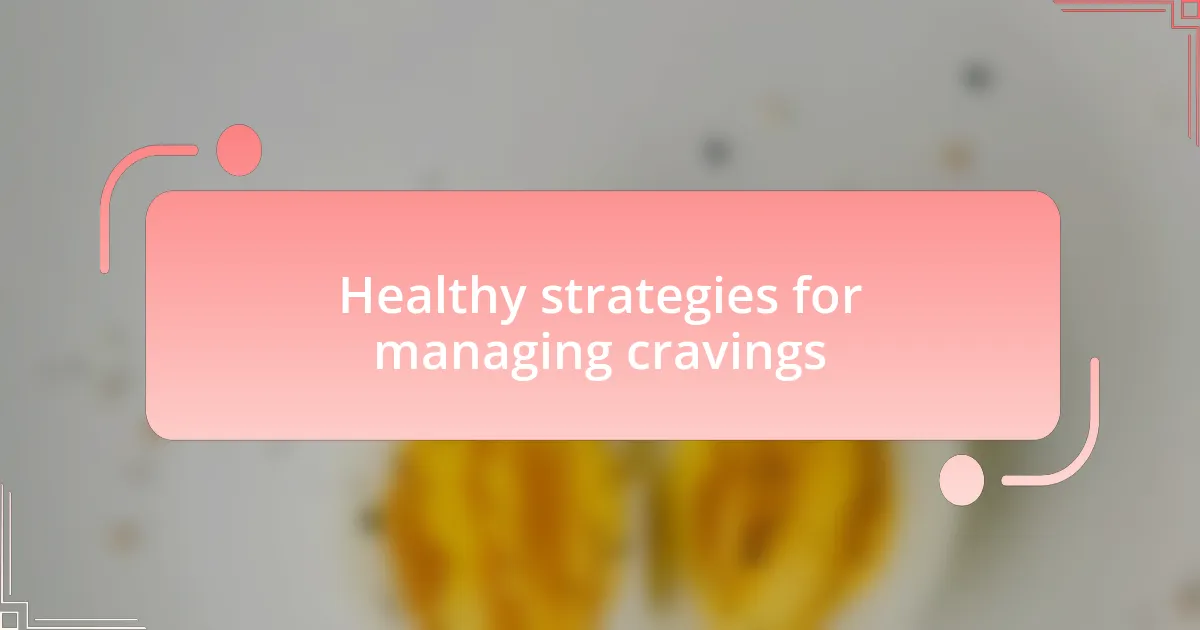
Healthy strategies for managing cravings
One effective strategy I’ve found for managing cravings is to keep healthy snacks on hand. When I feel a sudden urge to snack, I often reach for fresh fruit or a handful of nuts instead of processed junk. I’ve discovered that having these options readily available allows me to satisfy that need without derailing my goals. Isn’t it amazing how simple preparation can make such a difference?
Another approach that has worked wonders for me is staying hydrated. I realized that sometimes, when I crave something sweet, I’m actually just thirsty. I try to keep a bottle of water nearby, especially during those afternoons when cravings tend to strike the hardest. This little habit not only helps curb false hunger signals but also boosts my overall wellness.
Mindful eating is a game changer, too. I’ve started dedicating time to truly enjoy my meals, focusing on each bite. When I savor the flavors and textures on my plate, I find myself feeling more satisfied and less prone to cravings soon after. The question I often ask myself is, “Am I enjoying what I’m eating?” By making eating an intentional act, I learn to appreciate my food more and, surprisingly, my cravings decrease.
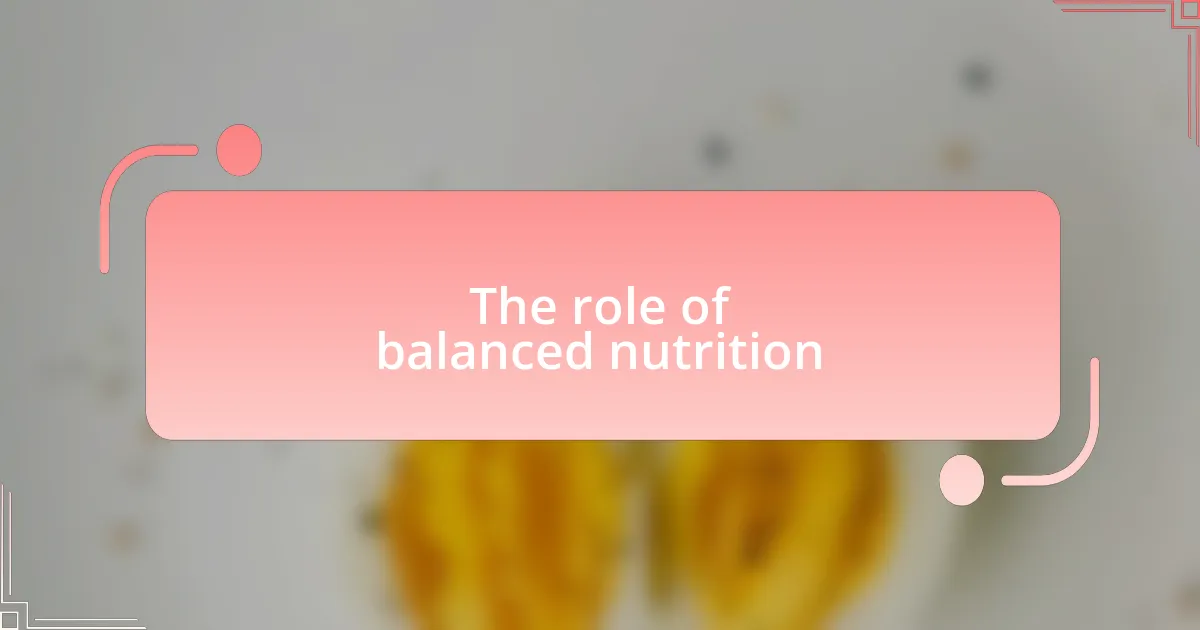
The role of balanced nutrition
Balanced nutrition plays a pivotal role in effectively managing cravings. When I make sure my meals include a variety of nutrients—like proteins, healthy fats, and complex carbohydrates—I notice my cravings become less intense. I remember a time when I was only focusing on low-calorie foods, and it left me feeling deprived. Now, I prioritize balance, which not only satisfies my hunger but also keeps those pesky cravings at bay.
Incorporating whole foods into my diet has also proven beneficial. For instance, I love starting my day with a hearty breakfast that includes whole grains and protein. This combination keeps me fuller for longer and helps prevent those unexpected urges for sugary snacks later in the day. Have you ever tried a breakfast like this? It makes a world of difference in how I feel, both physically and mentally.
Additionally, I’ve found that gradual changes to my eating habits yield the best results. Instead of overhauling my diet completely, I focus on small, manageable adjustments. For example, swapping one processed food item for a nutrient-dense alternative has, over time, reshaped my cravings. Isn’t it fascinating how such simple modifications can lead to substantial changes in how we perceive food?
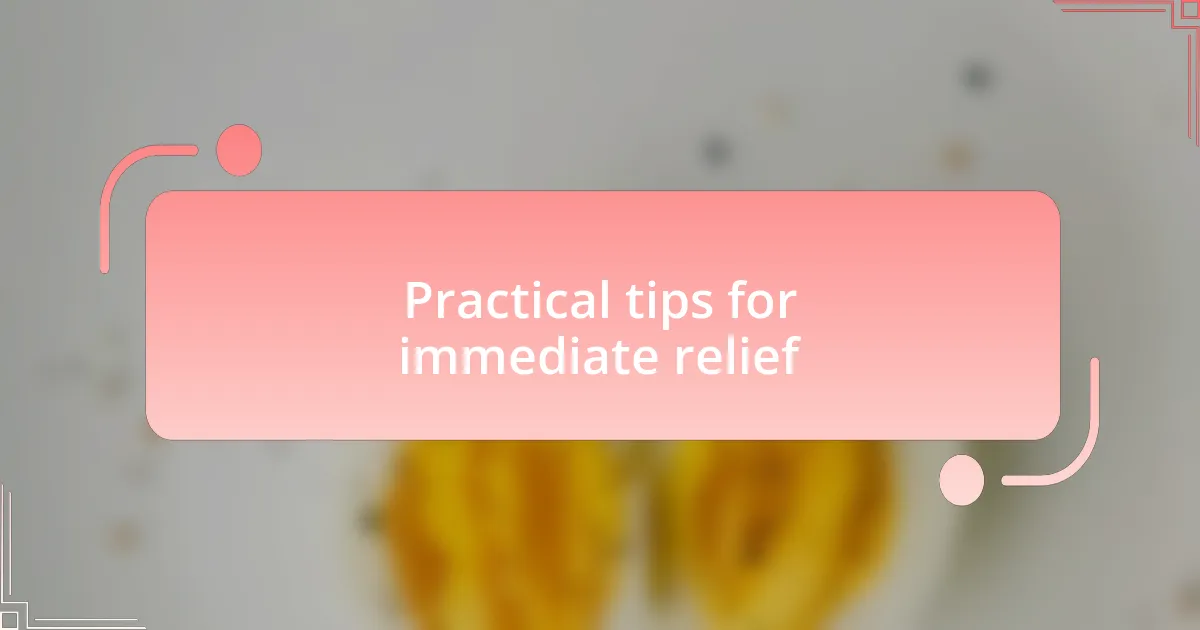
Practical tips for immediate relief
When cravings hit, I find that drinking a glass of water can provide immediate relief. Often, I realize I’m just dehydrated rather than truly hungry. Have you ever experienced that moment of clarity when you realize a simple habit can change how you feel?
Another effective strategy for me is to have healthy snacks ready to go. I always keep a few carrot sticks or a handful of nuts within reach. On days when the temptation for sweets strikes, grabbing a healthy snack distracts me and keeps my energy consistent. I can’t tell you how many times this small change has saved me from mindlessly reaching for the cookie jar.
Lastly, I’ve discovered the power of deep breathing. When cravings arise, taking a few moments to pause and breathe deeply helps me reconnect with my body’s signals. This practice not only calms my mind but also gives me the space to decide if I’m truly hungry or just craving comfort. Have you ever tried this mindful approach? It totally shifts my perspective in those craving moments.

Personal experiences with cravings
Cravings can be intense and often catch me off guard. I remember a particularly challenging afternoon when I was working late and suddenly felt a strong urge for chocolate. Instead of giving in right away, I took a moment to assess why I craved it. It turned out I was simply stressed, not hungry. Has that ever happened to you? Realizing the emotional connection really helped me refocus my energy towards something more constructive.
I’ve also encountered cravings during social events. At a recent gathering, the dessert table was calling my name. Instead of feeling deprived, I opted to engage in conversation and enjoy the atmosphere. Interestingly, by the end of the night, I didn’t even feel the need for dessert. Have you noticed how being present in the moment can diminish those urges?
There are days where cravings feel relentless, and I’ve learned to embrace the experience rather than fight it. I recall a Saturday when I allowed myself a small piece of my favorite dessert, enjoying every bite without guilt. This mindful indulgence reminded me that it’s okay to treat myself occasionally. Isn’t it liberating to find a balance between enjoying what we love and staying true to our health goals?
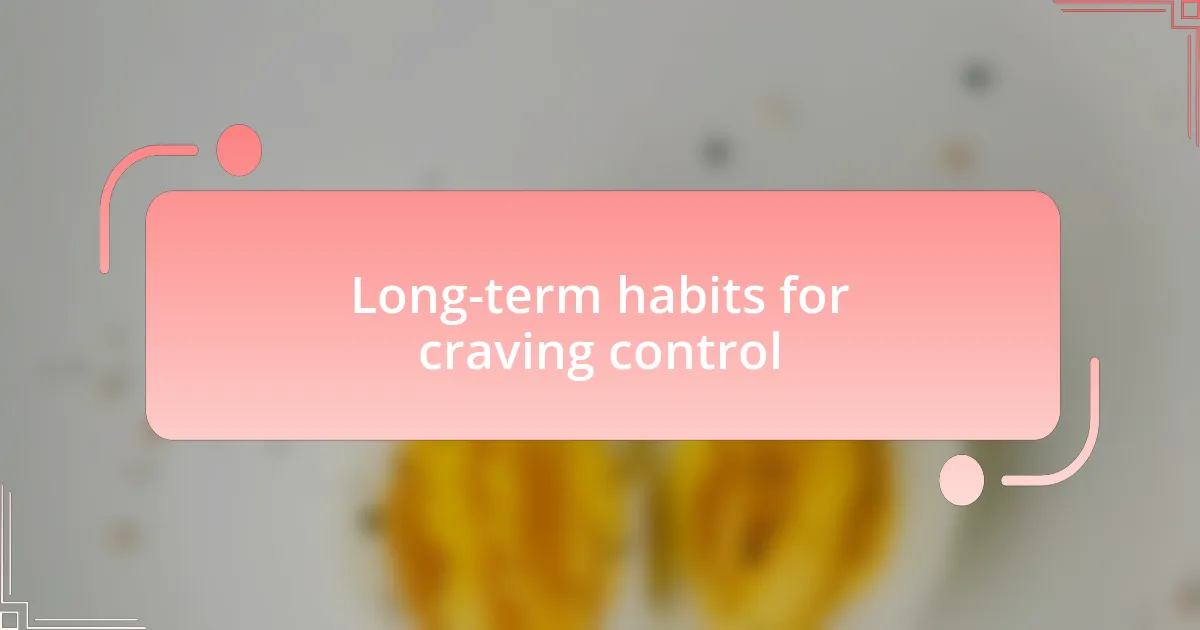
Long-term habits for craving control
Developing long-term habits for managing cravings can be incredibly beneficial. I often find that keeping my body well-nourished throughout the day reduces those sudden urges. For instance, when I incorporate protein and healthy fats into my meals, I feel fuller for longer, which helps me resist the call of snacks that might derail my goals. Have you tried adjusting your meal composition to see how it affects your cravings?
Another habit I’ve adopted is staying mindful about hydration. On days when I’m not drinking enough water, I frequently mistake thirst for hunger. I distinctly remember a day when I reached for a bag of chips, only to realize later that all I needed was a glass of water. This simple change can make a significant difference. Have you noticed how staying hydrated impacts your snacking impulses?
Lastly, I believe in the power of planning ahead. On busy days, I prepare healthy snacks in advance, which serve as my go-to options when cravings strike. There’s been a time when I packed some carrot sticks and hummus for an afternoon at work. Not only did I avoid the vending machine, but I also felt good about my choices. How do you prepare yourself for those craving-filled moments in your day?